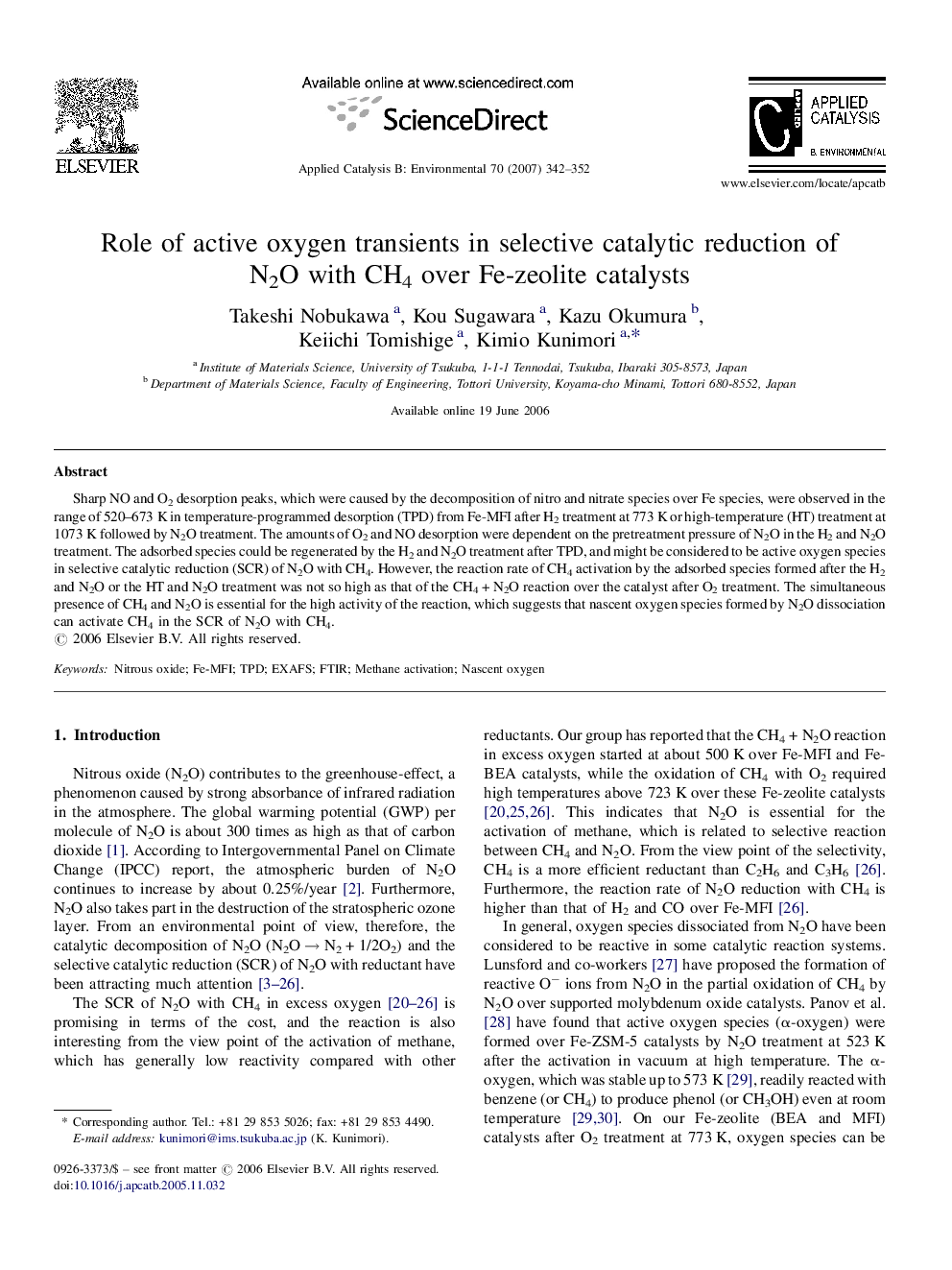| Article ID | Journal | Published Year | Pages | File Type |
|---|---|---|---|---|
| 48816 | Applied Catalysis B: Environmental | 2007 | 11 Pages |
Sharp NO and O2 desorption peaks, which were caused by the decomposition of nitro and nitrate species over Fe species, were observed in the range of 520–673 K in temperature-programmed desorption (TPD) from Fe-MFI after H2 treatment at 773 K or high-temperature (HT) treatment at 1073 K followed by N2O treatment. The amounts of O2 and NO desorption were dependent on the pretreatment pressure of N2O in the H2 and N2O treatment. The adsorbed species could be regenerated by the H2 and N2O treatment after TPD, and might be considered to be active oxygen species in selective catalytic reduction (SCR) of N2O with CH4. However, the reaction rate of CH4 activation by the adsorbed species formed after the H2 and N2O or the HT and N2O treatment was not so high as that of the CH4 + N2O reaction over the catalyst after O2 treatment. The simultaneous presence of CH4 and N2O is essential for the high activity of the reaction, which suggests that nascent oxygen species formed by N2O dissociation can activate CH4 in the SCR of N2O with CH4.
